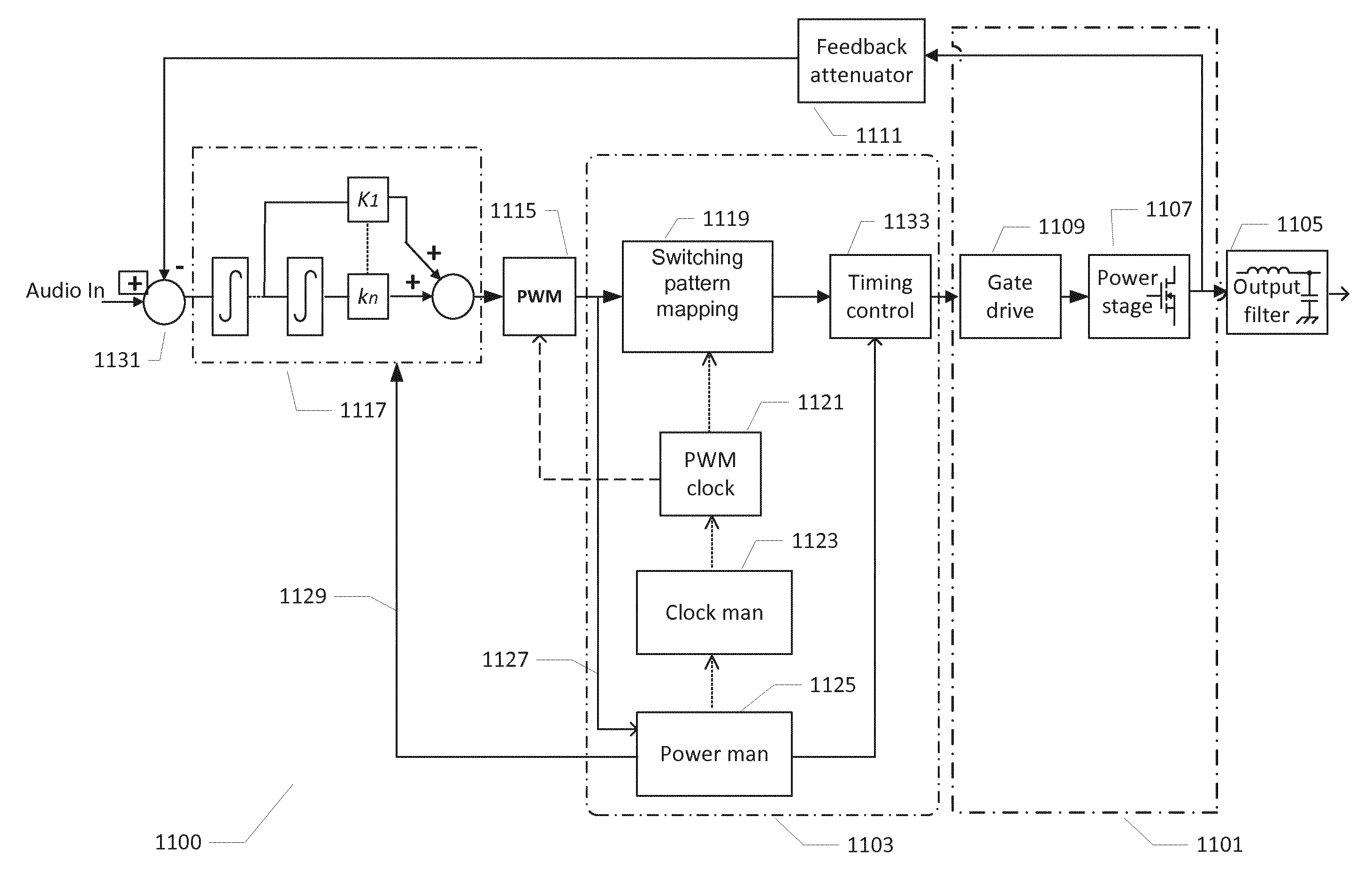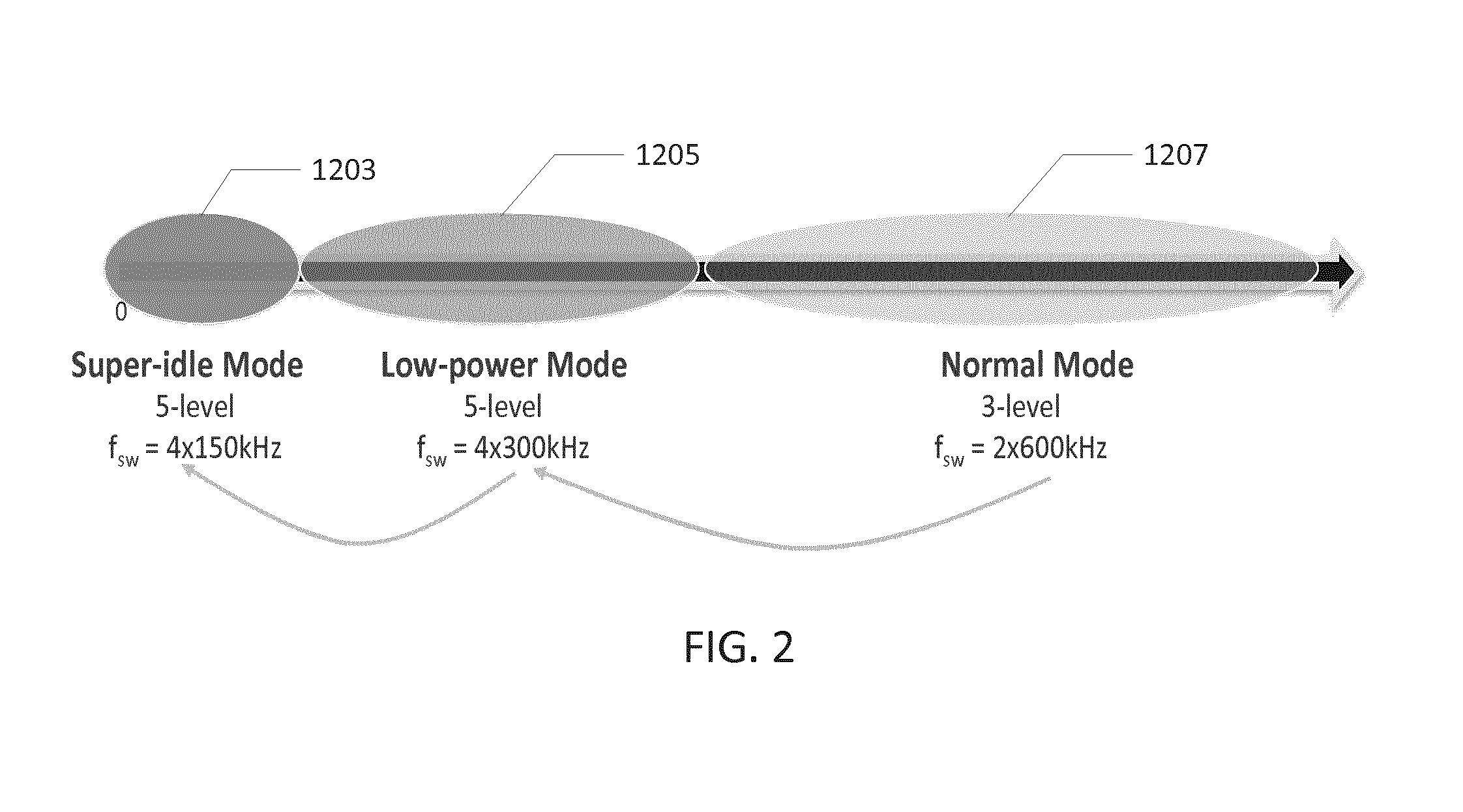Class D audio amplifier with adjustable loop filter characteristics
a filter characteristic and audio amplifier technology, applied in the direction of dc amplifiers with modulator-demodulator, amplifiers with semiconductor devices/discharge tubes, low frequency amplifiers, etc., can solve the problem of unstable feedback loops, and achieve the effect of reducing the breakdown voltage requirements of individual semiconductor switches
- Summary
- Abstract
- Description
- Claims
- Application Information
AI Technical Summary
Benefits of technology
Problems solved by technology
Method used
Image
Examples
fourth embodiment
[0082]FIG. 14 is a schematic diagram of a class D audio amplifier with an H-bridge output driver comprising first and second output drivers 725, 726, respectively, coupled to a loudspeaker load 740 in accordance with the class D audio amplifier. The illustrated a class D audio amplifier also utilizes a multi-level balanced load signal. In the present embodiment, a first DC voltage source is configured to set a third supply voltage, preferably one-half of VS, at a first output node VA of a first output driver 725. A second DC voltage source is configured to set the third supply voltage, preferably one-half of VS, at a second output node VB of a second output driver 726. The first and second DC voltage sources comprises respective pairs of capacitive voltage dividers and semiconductor switches to generate one-half of VS voltage levels as explained below in further detail.
first embodiment
[0083]The topology of each of the output drivers 725, 726 is often referred to as a “neutral-point clamped” three-level half-bridge. A first load inductor 738 and a first load capacitor 722 is coupled between a first output node VA of the first driver 725 and a first terminal of the loudspeaker load 740 to form a lowpass filter. Another lowpass filter is formed by a second load inductor 737 and a second load capacitor 723 which are coupled between a second output node VB of the second driver 726 and a second terminal of the loudspeaker load 740. The purpose and characteristics of each of these lowpass filters are the same as those previously discussed in connection with output driver 401. The first output driver 725 comprises an upper leg with a first semiconductor switch SW2 coupled in series between a first supply voltage VS and a first output node VA of the first output driver. A second leg comprises a second semiconductor switch SW3 is coupled in series between GND, i.e. a secon...
PUM
 Login to View More
Login to View More Abstract
Description
Claims
Application Information
 Login to View More
Login to View More - R&D
- Intellectual Property
- Life Sciences
- Materials
- Tech Scout
- Unparalleled Data Quality
- Higher Quality Content
- 60% Fewer Hallucinations
Browse by: Latest US Patents, China's latest patents, Technical Efficacy Thesaurus, Application Domain, Technology Topic, Popular Technical Reports.
© 2025 PatSnap. All rights reserved.Legal|Privacy policy|Modern Slavery Act Transparency Statement|Sitemap|About US| Contact US: help@patsnap.com



